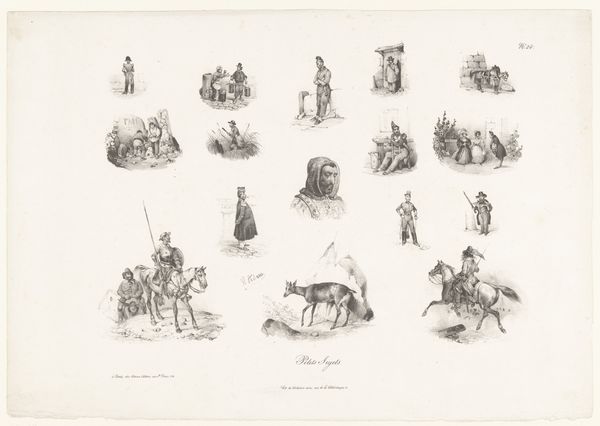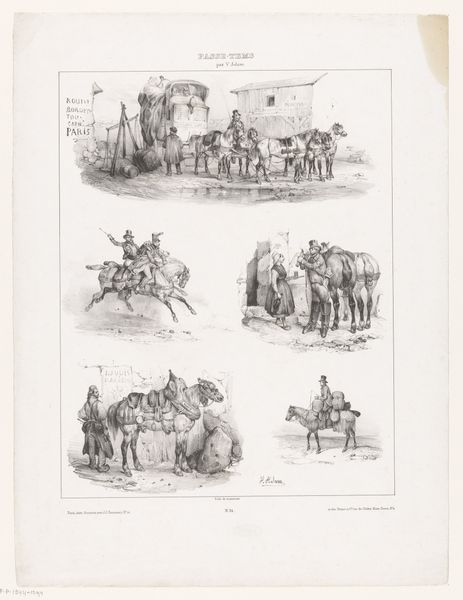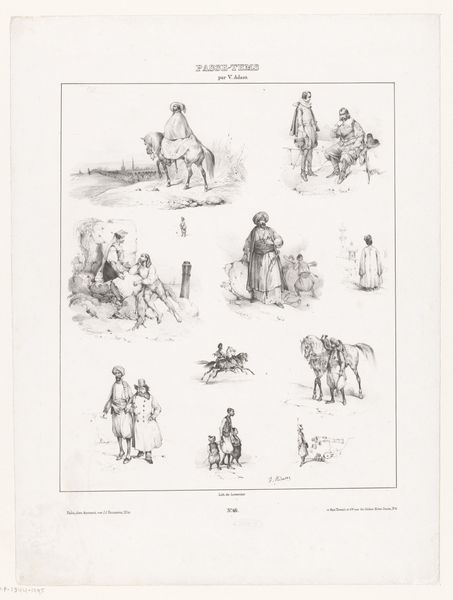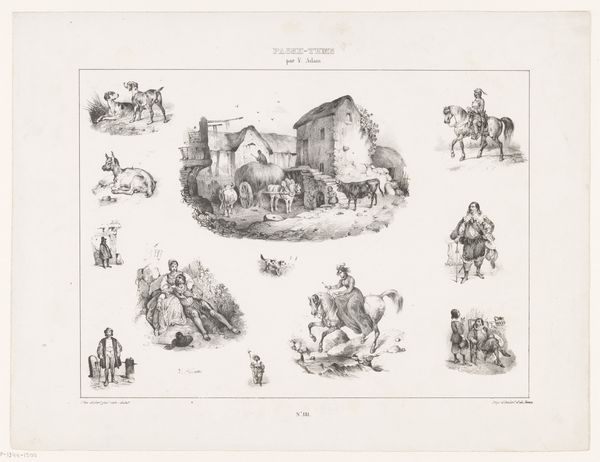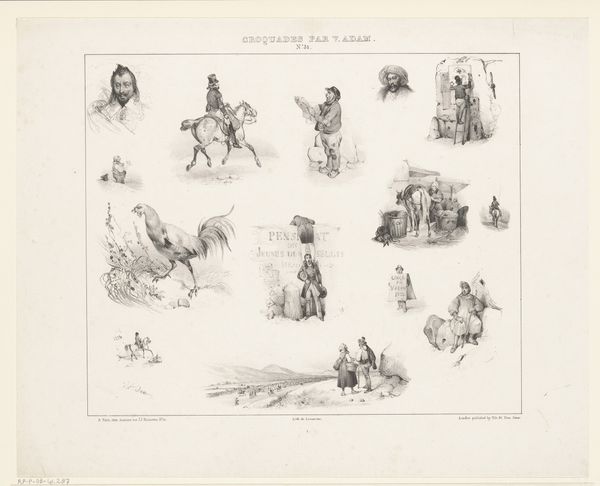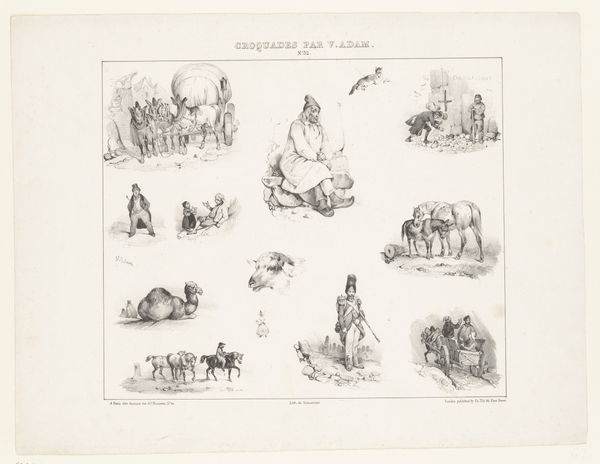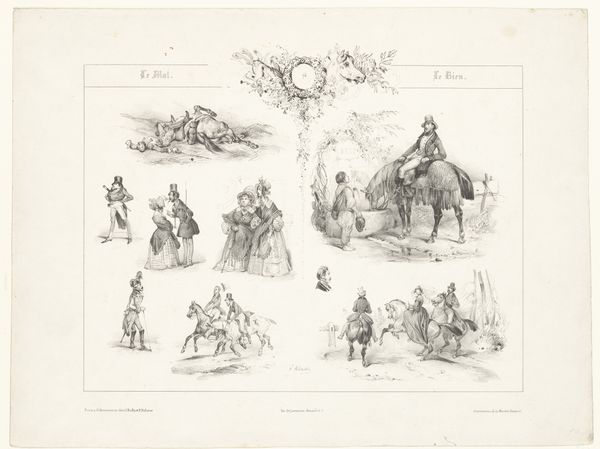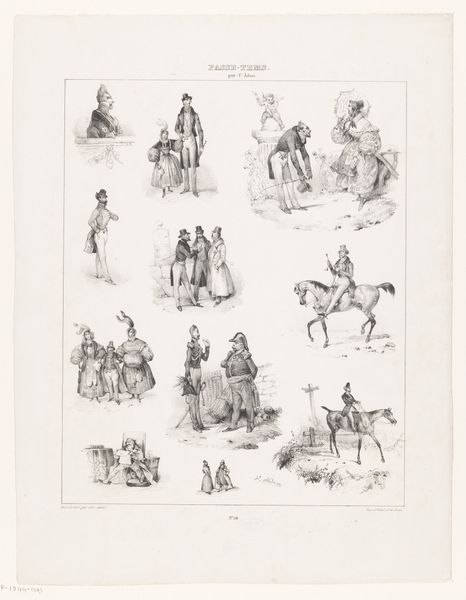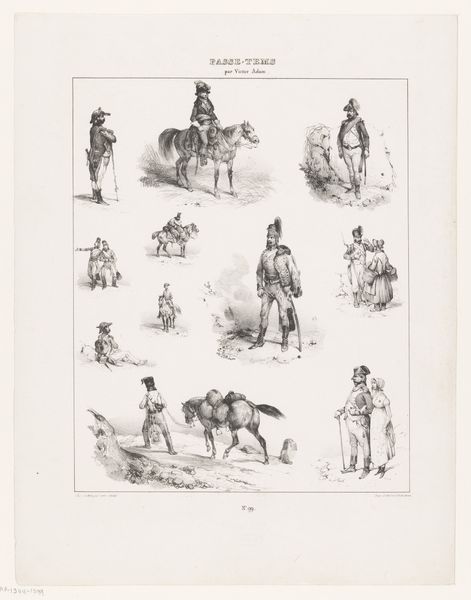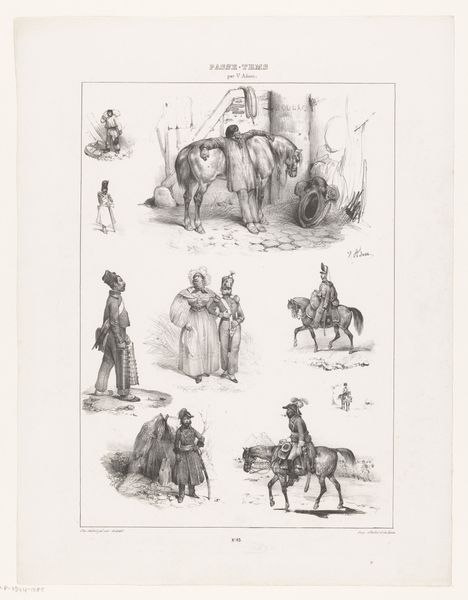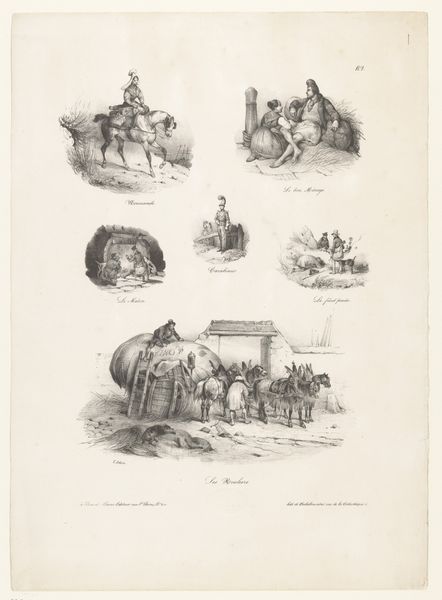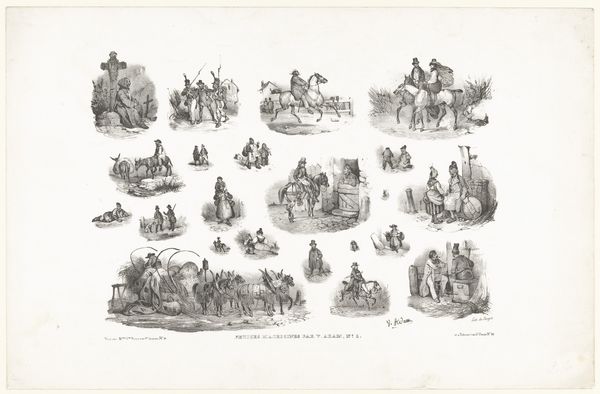
Dertien voorstellingen uit het dagelijks leven met diverse menselijke figuren en paarden 1833
0:00
0:00
drawing, print, pencil
#
drawing
#
quirky sketch
# print
#
landscape
#
figuration
#
personal sketchbook
#
idea generation sketch
#
sketchwork
#
romanticism
#
pen-ink sketch
#
pencil
#
horse
#
sketchbook drawing
#
genre-painting
#
storyboard and sketchbook work
#
sketchbook art
#
fantasy sketch
#
initial sketch
Dimensions: height 267 mm, width 343 mm
Copyright: Rijks Museum: Open Domain
Curator: Before us is a print by Victor Adam titled "Thirteen scenes from daily life with various human figures and horses", dating back to 1833. It’s currently held in the collection of the Rijksmuseum. Editor: My first impression is of a delightful hodgepodge! It feels like stepping into a charming 19th-century storyboard, capturing glimpses of ordinary existence. There's a quaintness to the composition. Curator: It's interesting that you mention a storyboard. Adam was actually quite fascinated by the burgeoning culture surrounding printmaking and affordable reproductions. He experimented a lot with ways to distribute his work to a wider audience than traditional art markets allowed. You could argue, here, that he presents almost a proto-comic strip in a single frame. Editor: Absolutely. And the themes of everyday life invite an analysis of social structure. Observe the figures – the blend of laboring bodies alongside seemingly wealthier, stationary individuals. Do we see hints of social critique embedded within these observations of 19th-century Dutch life? Who is depicted? And, equally importantly, who *isn’t*? Curator: From a material perspective, it’s all about the etching technique that allowed for multiples, for circulation, and ultimately for the construction of a specific kind of visual culture focused on affordability and access. Think about who owned these kinds of prints, versus a unique painting in an aristocratic home. Editor: The act of creating multiple reproductions speaks to accessibility and democratisation of art, something of paramount importance when examining social disparities in class-bound society. And this isn't a neutral act. Who gets to see which images, and where, is crucial to our understanding. Curator: The level of detail Adam achieves using etching techniques is quite stunning, wouldn’t you agree? And the choices about what to represent, in what light, are essential considerations for thinking about his overall intentions as an artist engaging with the rapid social transformations occurring in the 19th Century. Editor: True, and viewed in light of contemporary postcolonial or critical race theory, we could consider to what degree these images are subtly, or not so subtly, involved in shaping perceptions of the "other", of normalcy, and ultimately, the very frameworks of power and social dominance. Curator: An intriguing and crucial aspect to bear in mind, especially given the prevalence of such images in shaping broader societal values at the time. So many layers of material and historical contexts at play in this deceptively straightforward print! Editor: Precisely! It demonstrates just how much these snapshots of seemingly mundane moments can unveil about society when interrogated through the right theoretical lens.
Comments
No comments
Be the first to comment and join the conversation on the ultimate creative platform.
